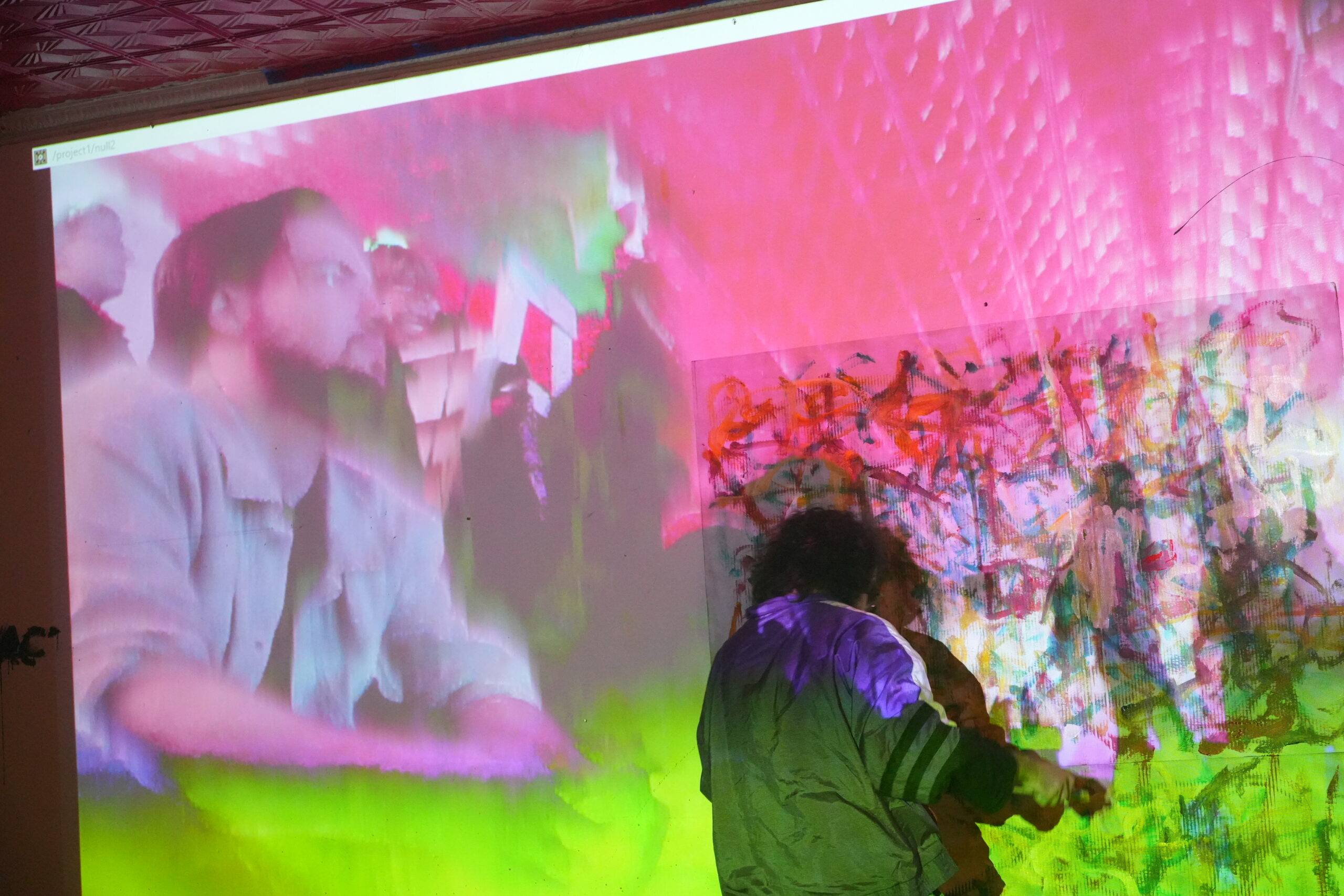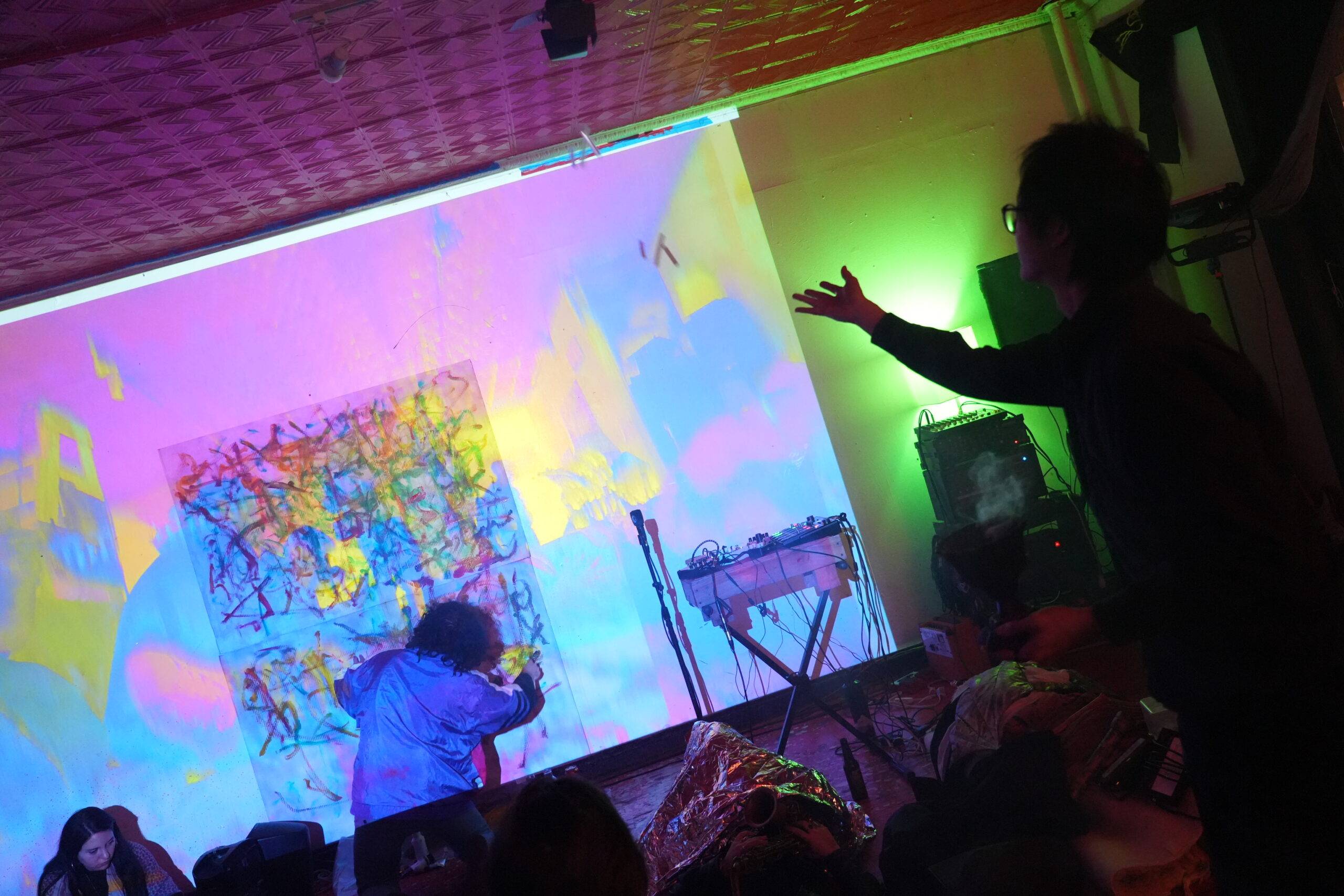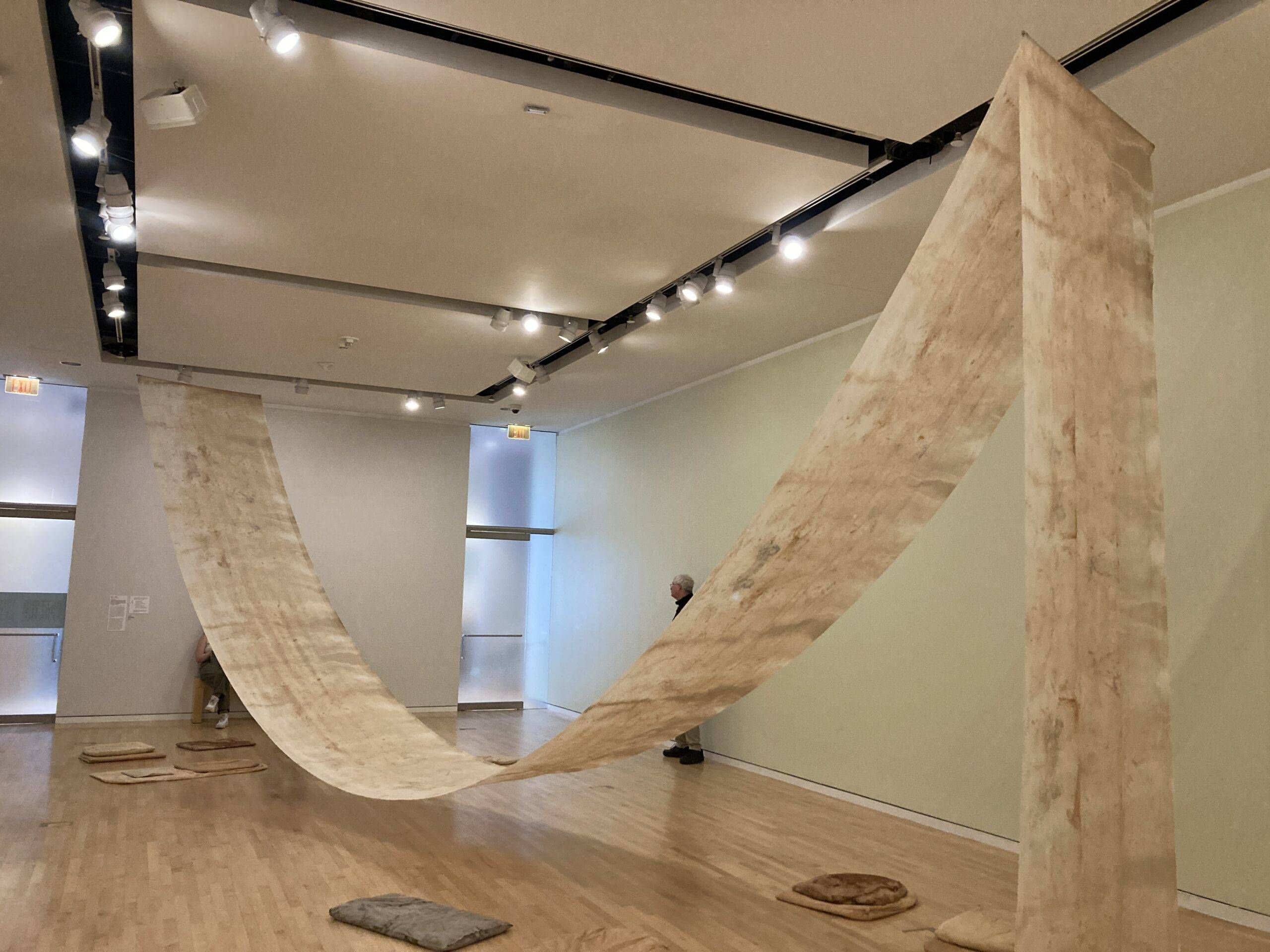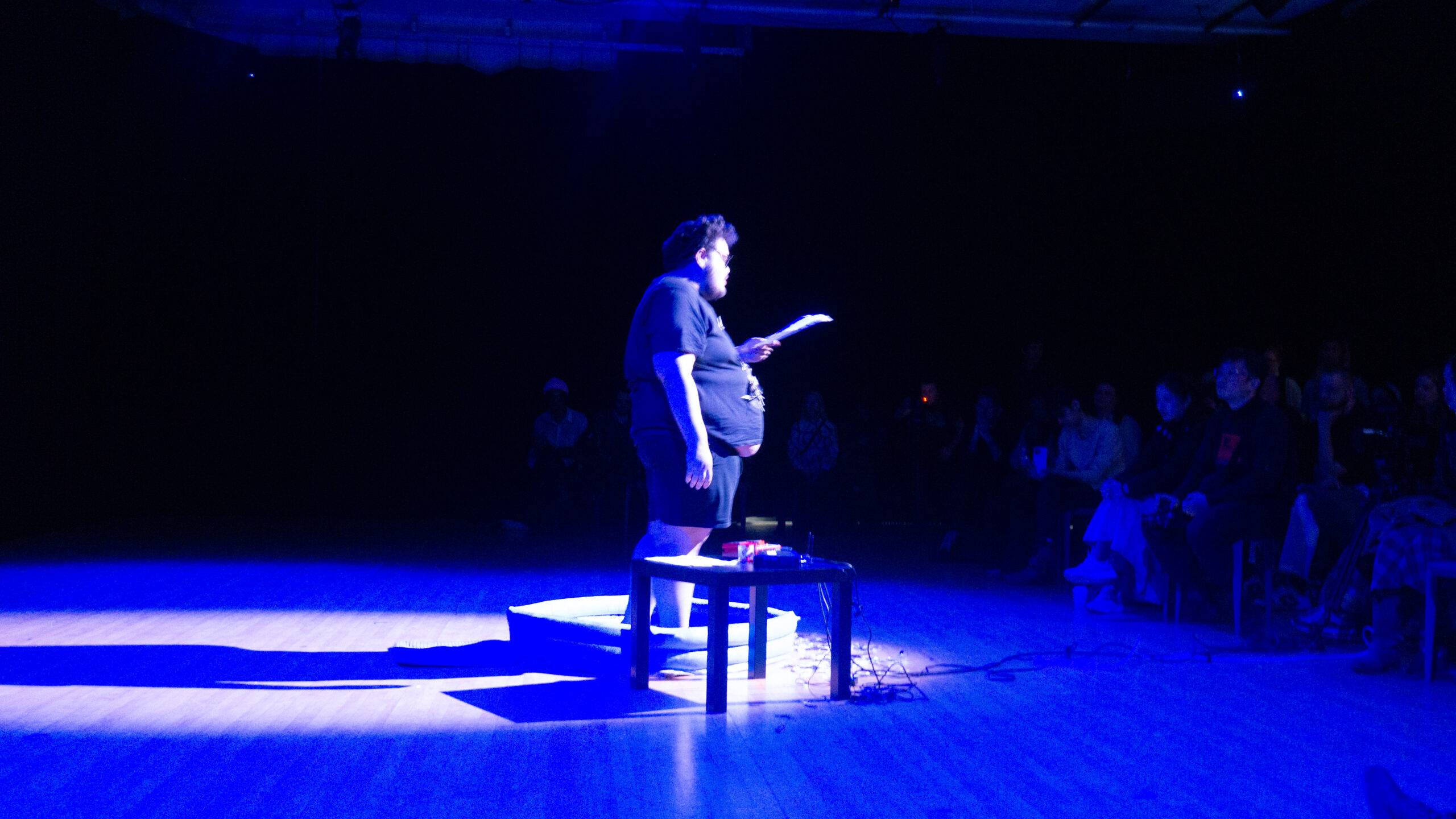When I decided to take the Blue Line to Wicker Park to see an experimental theater show, I did not know what to expect. As I walked past bars and trendy stores, I wondered if I was in the right neighborhood. But there I was; Google Maps told me I’d arrived at my destination: between a full bar and the Levi’s store, at a narrow door, where on it a sign said “No Nation.”
As I entered {\}() {\}∆‡!(){\} (No Nation—Tangential Unspace Performance Art Lab), by walking up a flight of stairs into what seemed to be a residential building, I could already hear an otherworldly soundscape. I turned right, opened a door, and suddenly, I was immersed in a whole different universe.
The show “and the home of the [placeholder]—S1E3” was held by 25 members of the //sense artist collective, of whom many are affiliated with The School of the Art Institute of Chicago (SAIC). I was told it was going to be a performance where the visitors would be actively involved in the show. I did not know what that entailed, but soon realized when Gordon Fung (MFA in Film, Video, New Media, and Animation 2024), the curator of the show and leader of the //sense artist collective greeted me with the words: “This is the central collaborative piece of the show, we have drinks and snacks, but also trash, take anything you want.”
I did not pay any entrance fee but was offered free food and drinks? Interesting. NoNation does not charge entrance fees for their shows. Instead, visitors pay with buttprints or poems. So — still trying to grapple with the colorful lights and crazy sounds filling the rectangular room — I wrote a poem. The instructions, a prompt set by Erica Zhan (MA in Visual and Critical Studies 2023): write a poem about the first thing you heard today, seal it in a plastic bag and weigh it.
After “paying” my entrance fee I started walking around. The main exhibition space in NoNation only measures 50 x 25 feet and I was amazed by the amount of artwork displayed in the space. My eyes were first attracted to a silver mylar rescue blanket, hung from the ceiling; a work by Kim Nucci titled: “reflecting pool.” Nucci’s work was gradually transformed during the performance as bits of the silver blanket were flying around the room.
All of the artwork was displayed in the space two days prior to the show and was incorporated into the collective performance on the last day. Artists and audiences started: running across the room, rolling on the floor, blowing into plastic tubes, frantically banging on the floor with drumsticks. Sounds from the speakers, noises from the room, from various microphones and a megaphone intermingled creating a fascinating composition. I was bewildered by the organized chaos, by the wildness.

On one wall, Lorenzo Osterheim’s (MFA in Art & Technology / Sound Practices 2025) abstract live-video was projected as underneath a canvas was hastily being painted while the artist was blind to the colors they were applying on the canvas. On the floor next to Osterheim was, Mateo Badilla (BFA 2024) led a performance of cake decoration, while Misa Sourour (BFA 2025) was toasting bread till it became black, then throwing the slices across the room as a response to Gordon throwing plastic tubes toward the stage.

The line between spectators and artists became blurred: Some visitors started sitting on the floor, blowing into tubes, playing with toast slices; some taped receipts to an artist (which was a prompt set by Ping Ho who is an exchange student studying in Florida) and then proceeded to play soccer with the audience.
Other visitors, a little taken aback by this interactivity not often seen in traditional art spaces, would sit on the comfortable couches draped around the scene and observe the happenings from a safe distance. I was one of these people, indoctrinated for years with the beeping sound in museums when stepping too close to a piece.
Sure enough, as I stood there, absorbed by the creative universe that unfolded in front of me, I was approached by one of the performance artists, Virginia Kennard (MFA in Performance 2025). They were wearing a pink unicorn helmet, with a toast slice skewered on the unicorn’s horn, and they asked me if I had an embarrassing poop story I would like to share. Sure, I had one. As I laid down the sheet with my story I discovered a dozen other poop stories written by other visitors. Some were so good that I saw fellow visitors sneakily letting them slide into the pockets of their jackets to take them home.
More than a show, “and the home of the [placeholder]—S1E3”, was simply an experience. I did not merely look at art, I became part of it. All around the room, people were chatting and exchanging. In this collaborative space, I felt a sense of community I had never felt in a museum or any other exhibition. I discovered a freedom I did not know art could have in today’s rigid world: There was no wrong or right, everyone seemed to follow their instincts rather than their rational thoughts.

Together, visitors and artists created, invented, and destroyed. Everyone became an artist, a character in a bigger piece. Art was not only displayed it was played with and it existed only for the fleeting moments of the performances. After one and a half hours of observing, touching and feeling I stepped from the //sense universe back on to the comparably dull streets of Wicker Park, knowing one thing with certainty: I am taking a performance class.







